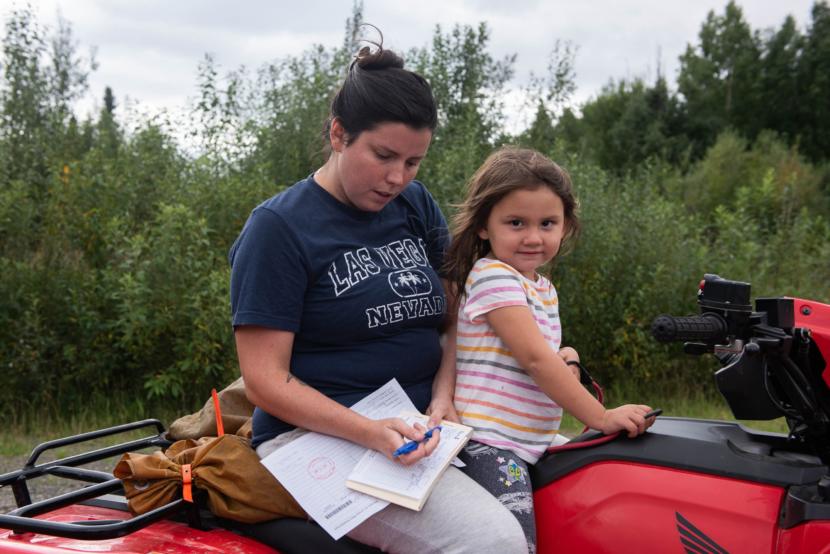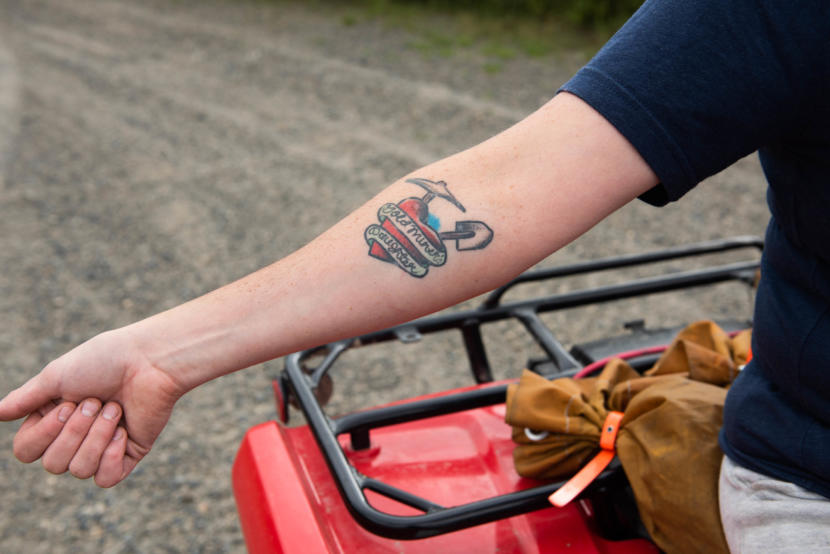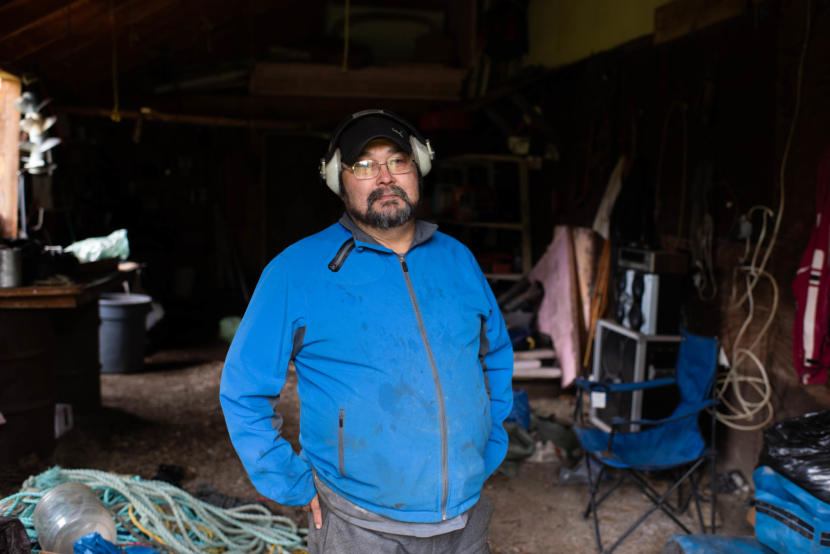
This is a three-part series reported from a village of 20 people on the Upper Kuskokwim River that stands to gain the most from the proposed Donlin mine. Red Devil was built by mining almost 100 years ago, and now carries a toxic legacy of mine pollution. But to its residents, the Donlin Gold mine represents hope. Like so many communities in Alaska, resource extraction is at once a lifeline and a risk.
Red Devil, Alaska, Part I
Outside Rebecca Wilmarth’s kitchen window, there’s a big green well-manicured lawn. It’s an unusual sight in one of the most remote places in Alaska. Wilmarth says there’s a history of big gardens and meticulously-kept lawns in Red Devil. The gardens grow some of the only fresh produce residents will eat and then save the rest for the winter.
“You know that sounds kind of cliche but we really do, you know, think about that,” Wilmarth said.
While talking, Rebecca’s phone pings occasionally with emails. She has to string together multiple part-time jobs to make a living here. She’s the agent for Ravn, maintains the airstrip, sells fuel and occasionally puts up travelers in a small, one-room cabin next to her house.
Rebecca also sends her seven-year-old daughter to Palmer for school because Red Devil doesn’t have one.
Red Devil used to be home to Alaska’s biggest mercury mine. Before the mine started in 1933, there was no permanent village. At its height, after the mine came, the village had a bar called the Mercury Inn, a school, a clinic and a store. Miners came from nearby communities. But it shut down in 1971 and people slowly left to find other jobs. Now, there isn’t much here. The population? Roughly 20.
“So we’re just kind of in this stagnant position and the people who are here just don’t want to turn their back on this lifestyle and make a lot of sacrifices to stay here. Because they think it feel like it still beats city life,” Wilmarth said. “I love everything about it. Just the isolation, I guess, from the rest of the busyness of the rest of society,”
But, Wilmarth and other residents think the proposed Donlin Gold mine could help revive Red Devil. The mine would be built just 50 miles down the Kuskokwim River. It would employ 800 people.
Rebecca Wilmarth’s father is Dick Wilmarth, the very first Iditarod champion. He also loved Red Devil and passed that on to his daughter. “Gold miner’s daughter” is tattooed on Rebecca Wilmarth’s right arm.

The proposed mine requires a lot of infrastructure: a port, an airstrip, a power plant, a proposed 315-mile pipeline to bring gas for the power plant from Cook Inlet, a road and fiber optic cable. Donlin says it expects to mine 1.3 million ounces of gold over a 27-year period. And that period could be even longer. As part of its lease agreement with the two Native corporations, which own the land and surface rights, Donlin promised to prioritize hiring local shareholders, like people who live in Red Devil.
The Donlin mine could be one of the biggest gold mines in the world. And the project is well on its way. Last year, it secured two vital federal permits and a handful of state permits. This year, it expects to receive several more. It’s also completing its safety certification for the seven dams it plans to build. That can take up to two years. It’s unclear when they will actually start mining.
“I think that’s what this area needs right now is the development of some kind,” Wilmarth said.

Glen Morgan and his brother Joe were raised in Red Devil but left with his family once the mine closed. Glen lived in Anchorage since 1997 but returned in 2015 with his wife, Theresa, after they retired. Glen’s parents are buried there. Glen wants to bring back basic services, like a health clinic for the people that still live there.

They would love the community to grow to a population of 200 — the same size it was when the Red Devil mine was in full swing just three miles away.
The old mine is now covered in trees and brush with a trail leading back toward where the buildings once stood. At the beginning of the trail leading to the mine site is a sign overgrown with fireweed. On a recent day, Joe Morgan hacked those out of the way.
The sign read: “Red Devil Mine, U.S. Department of Interior Bureau of Land Management. DANGER. Material at mine site may present human health risks.”
The Red Devil Mine left behind more than just the memory of good jobs. Developed before there were environmental safeguards, it also left behind pollution. The federal government has been working on a clean-up there for years.
In part two of our series, we’ll look at how Red Devil residents weigh the risks of that mercury pollution, and possible pollution from the mine, against he promise of jobs.